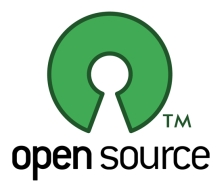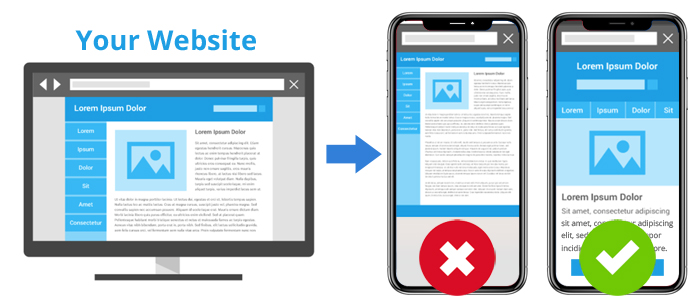
One of the least understood, yet most important elements when choosing your web design provider is knowing the difference between purchasing a proprietary product and an open source product.
Now that the internet is literally driven by open source WordPress, Firefox, Joomla, Thunderbird, Linux, Apache, MySQL, phpBB, OpenOffice.org, OSWD, WikiMedia, and more.) consumers have better, more affordable options and more effective tools for their needs.
Don’t find yourself handcuffed to a product or company that has developed a limited and expensive solution for your current needs. Open source grows with you, and your options for service and development are approaching limitless.
Know The Facts About Open Source vs. Proprietary:
1. Ownership
Do you own the elements that make up your real estate website, blog or blogsite?
Open Source:
In most cases, yes, you do own all the elements of your site.
You have dominion over the code, graphics, functionality and content.
The site can in fact be in your copyright.
Proprietary:
You never own all the elements of the site. Your relationship to the site is in essence just ‘renting’.
The code and functionality of the site are the core elements that you do not own.
Images and content are commonly owned by the client.
Being proprietary to the web design firm, the site is in their copyright.
Repercussions:
Scenario: Something happens to the company that ‘designed’ your site (company is bought-out, folds, changes):
Result with Open Source: Your site can be easily moved to another host server without any loss whatsoever.
Result with Proprietary: At a minimum, you lose all the architecture, functionality and features of your site.
2. Hosting
Every site on the internet needs to be hosted somewhere, what are your options?
Open Source:
Most hosting companies have the capacity to host the database, code and content that make up your open source site.
Normally, for convenience sake and for easy access, your web design company will manage your hosting, but it is not obligatory
Hosting fees are normally minimal because there is no ‘tie down’.
Email account management and domain forwards can be managed by client, or other.
Proprietary:
Proprietary software must be hosted by the company that owns the software.
Changing hosts is not an option.
Fees are determined by demand because there are no other competitors to their hosting services.
All email management and domain management must be done by company hosting the domain/site.
Repercussions:
Scenario: Something happens to the company that ‘designed’ your site (company is bought-out, folds, changes):
Result with Open Source: Your site can be easily moved to another host server without any loss whatsoever.
Result with Proprietary: At a minimum, you lose all the architecture, functionality and features of your site.
3. Upgrades
Open Source:
Open source is exponentially improved. Thousands of designers and coders are constantly improving on the core functionalities.
New versions are released regularly with one click upgrading.
Hundreds of custom plug-ins are being introduced annually, offering new functionalities all the time.
Proprietary:
Proprietary software only improves at the speed of the company’s ability to compete.
Proprietary software only improves when the company recognizes the need to improve.
Upgrades must be performed by the software company.
Plug-Ins are only available if the design company develops them.
Repercussions:
Scenario: You experience something on the internet that a competitor has implemented to enhance their site.
Result with Open Source: If feasible,* any capable designer can add the improving feature and more to your site.
Result with Proprietary: Your site must exist within the bounds of the company’s ability and flexibility.
4. Design Improvements:
Sometimes you just need a new design. We all do.
Open Source:
Employ your designer to whip something up.
Give one of thousands of designers access to your site, and pay them to give you that perfect new look.
Proprietary:
Employ your designer to whip something up.
Cross your fingers and hope that a new designer can work within your web design company’s unique format.
Repercussions:
Scenario: It’s time for a change, and you don’t want to work with the same designer you did the first time.
Result with Open Source: Any capable designer can work over open source and build you your vision.
Result with Proprietary: Some proprietary code will not be flexible enough to accept unique designers’ themes.
5. Cost:
It’s really all about the value, not the cost, nor the sales pitch.
Open Source:
Most open source is free or close to free.
Invest your money in truly custom designs and unique code development and organization for your needs.
Service fees are performed at a competitive rate because of the ‘openess’ of the site’s architecture.
Any capable designer and/or coder can make the changes you require.
Proprietary:
Base fees for proprietary products are unavoidable.
Design fees and custom changes add to the overall cost.
Fees are determined by demand because the product is considered unique
Changes must be performed ‘in-house’, at their fees and pace.
Repercussions:
Scenario: There are better service providers, cheaper hosting, slick coders and creative designers that you want to take advantage of.
Result with Open Source: You can either work with the company that helped you develop your site originally, or employ any number of technicians to get the job done.
Result with Proprietary: You will to either work with the company that helped you develop you site originally, or start from scratch.
*Not all elements that are found online are transferable to all real estate websites. IDX features, for example, vary from association to association.




